
Calpain is an evolutionary old family of soluble, neutral, calcium-dependent proteases, which have the unique property of using protein cleavage to modify the activity/function of their substrate proteins. There are two major calpain isoforms in the brain, calpain-1 and calpain-2. Calpain-1 and Calpain-2 exhibit opposite functions in both synaptic plasticity and neurodegeneration. Calpain-1 activation is required for the induction of long-term potentiation (LTP) and is generally neuroprotective, while calpain-2 activation limits the extent of potentiation and is neurodegenerative. Calpains release the link between the integrin-dependent FA complex and the actin cytoskeleton by proteolysis of talin, which allows proper cell migration. The activity of Calpains is tightly[..]

Members of the TNFR (Tumor Necrosis Factor Receptor) superfamily are important for cell growth and survival. CD27 is a member of the TNFR superfamily, which includes TNFR types I and II, NGFR (Nerve Growth Factor Receptor), CD30 (associated with Hodgkin lymphoma), Fas/Apo1 (CD95), CD40, 4–1BB, and OX40. These receptors are known to play a very important role in cell growth and differentiation, as well as apoptosis or programmed cell death. In addition to providing costimulatory signals for cell proliferation, ligation of both TNFR1 and Fas can result in programmed cell death or apoptosis. The underlying mechanism requires an intact 80-aa stretch present in the cytoplasmic tails of both TNFR1 and Fas, termed the DD (Death Domain) (Ref.1). CD27 is a disulfide-linked[..]
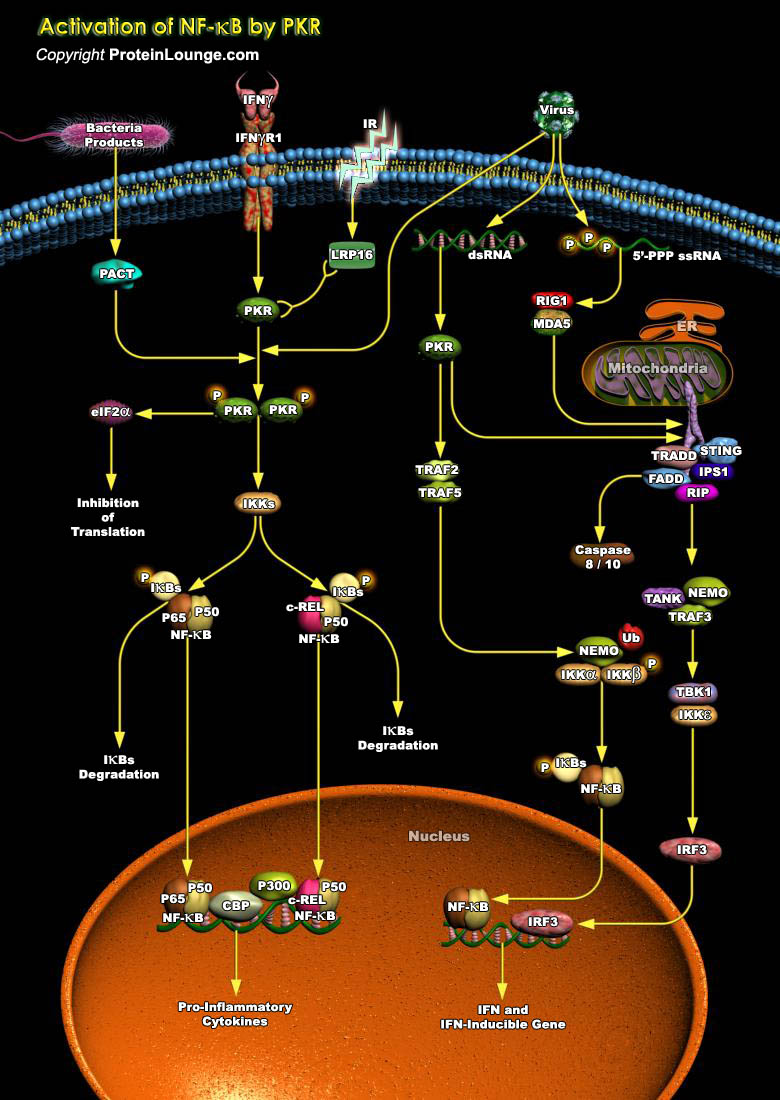
PKR (Protein Kinase-R) is a 68-kDa serine–threonine kinase that appears to play a primary role in mediating the antiviral activities of infected cells. PKR mediates apoptosis induced by many different stimuli, such as LPS (Lipopolysaccharides), TNF-Alpha (Tumour Necrosis Factor-Alpha), viral infection, or serum starvation. Viral infection leads to the increased expression and secretion of the cytokine IFN-Gamma (Interferon- Gamma) from host cells. IFN-gamma induces the dsRNA (Double-Stranded RNA)-dependent PKR. dsRNA, produced during viral replication, is an active component of a viral infection that stimulates antiviral responses in infected cells (Ref.1). The PKR protein is enzymatically inactive unless it is activated by binding to dsRNA. PKR activates as a kinase[..]
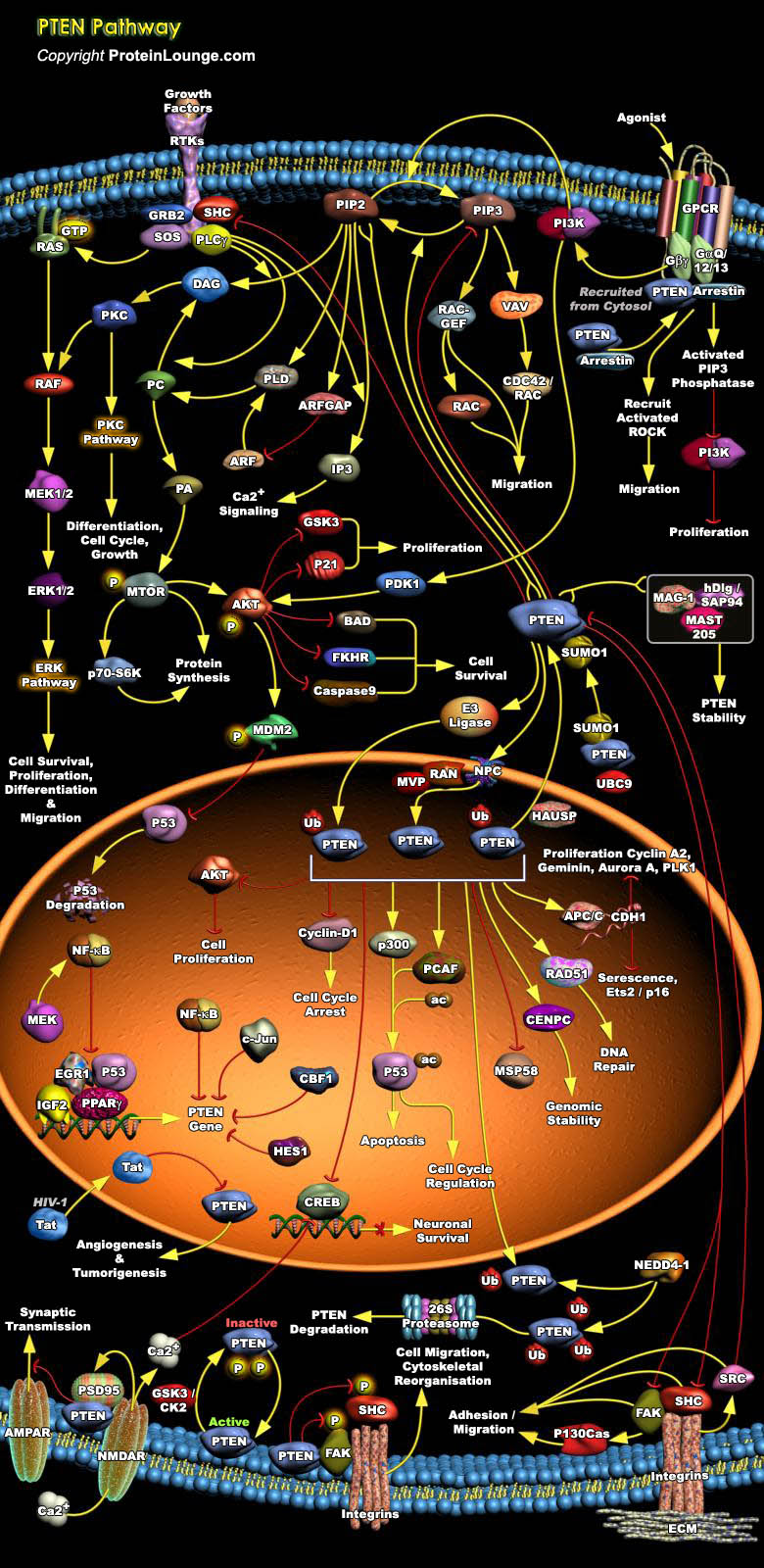
Phosphatase and tensin homolog deleted from chromosome 10 (PTEN) is a tumor suppressor protein, that is linked to AKT signaling, critically controlling proliferation, survival, migration, energy metabolism and cellular architecture in hematopoietic cells. PTEN is a dual-specificity protein phosphatase and an inositol phospholipid phosphatase that dephosphorylates phosphatidylinositol 3,4,5-trisphosphate (PIP3), thus producing phosphatidylinositol 4,5-bisphosphate (PIP2) and thereby negatively regulating oncogenic and nononcogenic PI3K/AKT signaling. PTEN may have additional phosphatase-independent activities, as well as other functions in the nucleus (Ref.1 and 2). PTEN's tumor-suppressing function largely relies on the protein's phosphatase activity and subsequent[..]
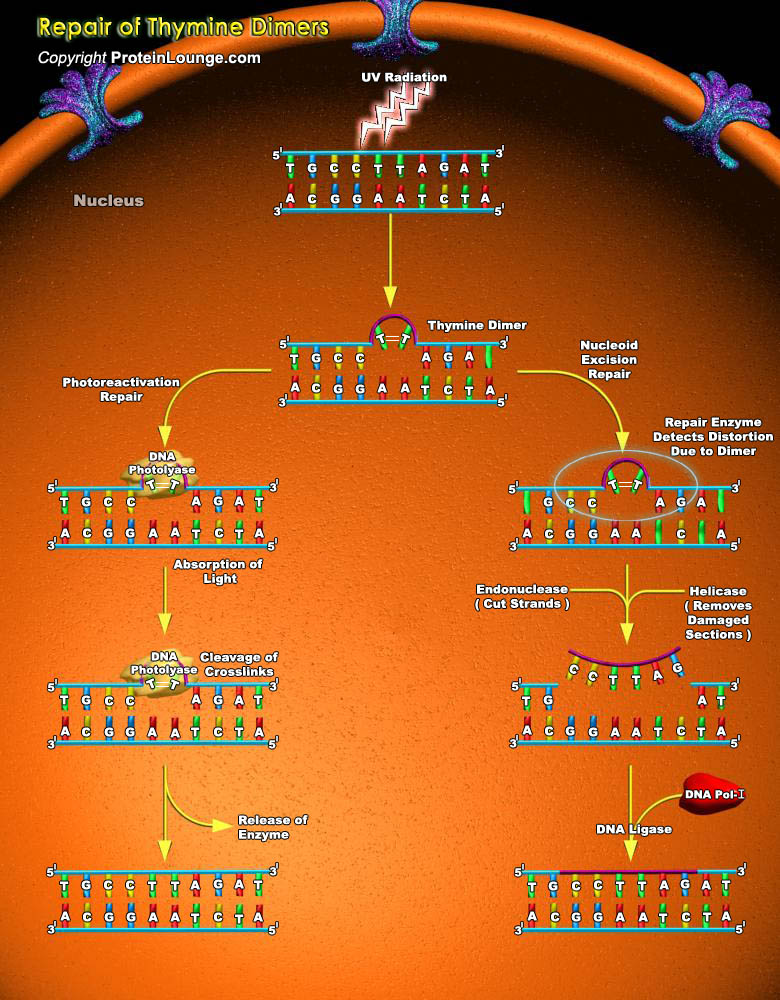
Irradiation of DNA by UV (Ultraviolet light) causes lesions, such as Cyclobutane-Pyrimidine Dimers or 6-4PPs (6-4 Pyrimidine Pyrimidone). The most common covalently linked adjoining pyrimidines are T-T (Thymine dimers), T-C (Thymine-Cytosine dimers) and C-C (Cytosine-Cytosine dimers). T-T dimers cause kinks in the DNA strand that prevent both replication and transcription of that part of the DNA. Because they block DNA replication (and therefore prevent cells from reproducing), T-T dimers and other forms of UV damage cannot be inherited, and thus do not constitute mutations. Such kinds of DNA damage are known as premutational lesions because they prevent both transcription and replication of the genes in which they are present and these lesions are fatal if they go[..]
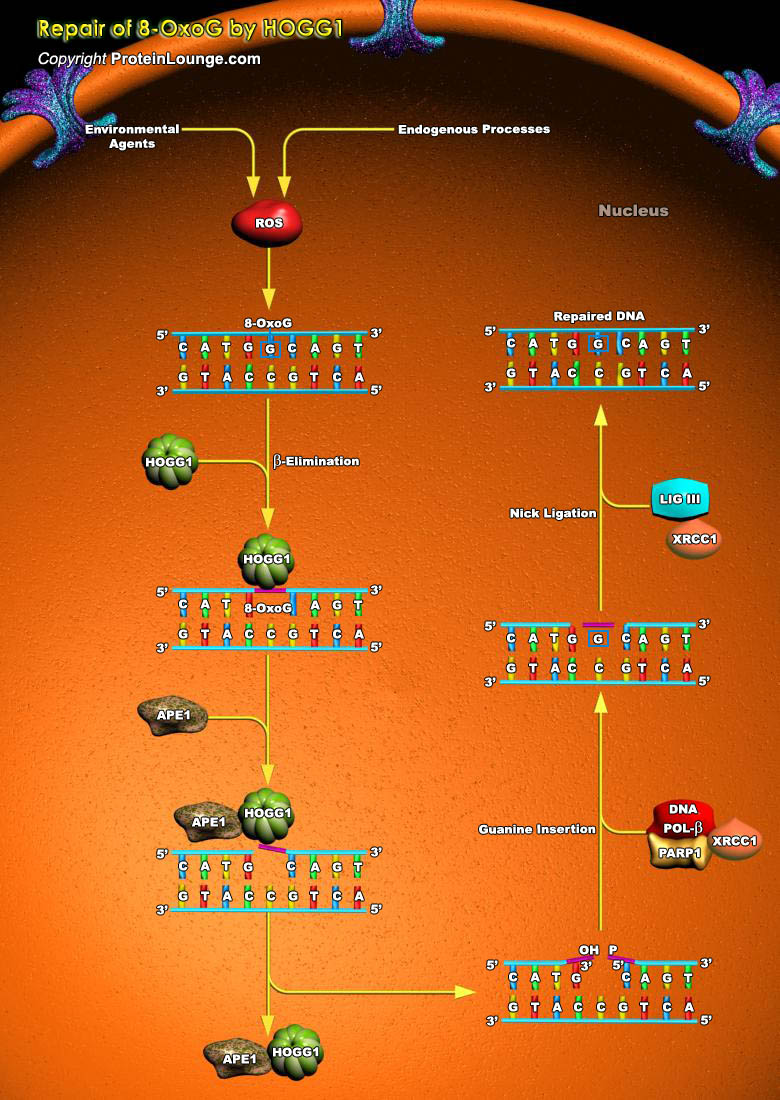
8-oxo-7,8-dihydroguanine (8-oxoG) is a pre-mutagenic DNA lesion that is formed by the oxidation of guanine. Reactive oxygen species (ROS) that is primarily responsible for the damage of guanine is produced as a result of several endogenous processes or environmental agents. ROS can cause damage to cellular macromolecules like proteins, lipids and nucleic acids. Proteins, proteins, lipids and RNA having oxidative damage are generally degraded and recycled, whereas DNA lesions like 8-oxoG need to be repaired to maintain genomic integrity (Ref.1 and 2). 8-oxoG is generally repaired in human through base excision repair (BER) pathway. The enzyme human 8-oxoG DNA glycosylase 1 (HOGG1) is the primary enzyme that initiates the repair of 8-oxoG. OGG1 initiated BER[..]
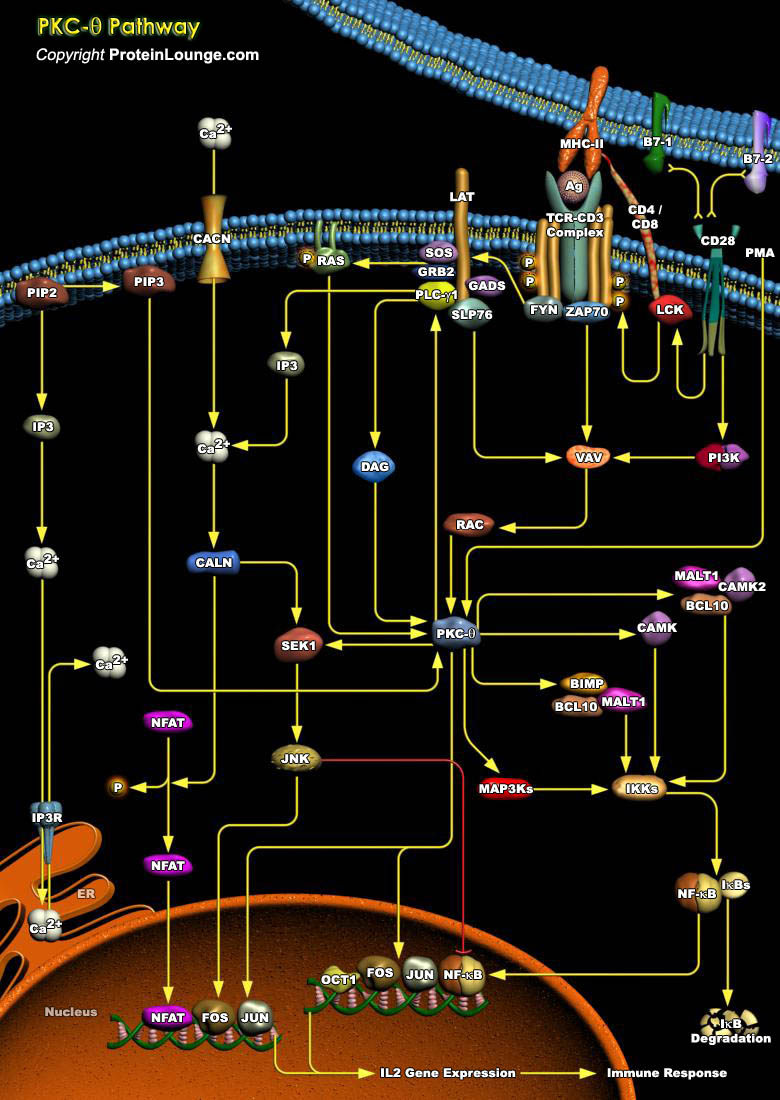
An effective immune response depends on the ability of specialized immunocytes to identify foreign molecules and respond by differentiation into mature effector cells. A cell-surface antigen recognition apparatus and a complex intracellular receptor-coupled signal-transducing machinery mediate this tightly regulated process, which operate at high fidelity to discriminate self from nonself antigens. Activation of T-Cell requires sustained physical interaction of the TCR (T-Cell Receptor) with a MHC (Major Histocompatibility Complex)–presented peptide antigen that results in a temporal and spatial reorganization of multiple cellular elements at the T-Cell–Antigen Presenting Cell contact region, a specialized region referred to as the IS (Immunological[..]

Tryptophan is an amino acid essential to survival. Amino acids serve as building blocks for proteins, as well as serving as starting points for the synthesis of vitamins and many other crucial cellular molecules. While most plants and microorganisms can produce all the amino acids they need, tryptophan is one of eight amino acids that cannot be produced by animals. Humans and animals do not themselves have the biosynthetic machinery to synthesize tryptophan but rely on dietary intake from bacteria and plants that do produce it. Tryptophan is the least abundant of the essential amino acids. However, it is also one of the most crucial, as it is involved not only in protein synthesis, but also in the formulation of niacin and the neurotransmitter serotonin. Serotonin is[..]
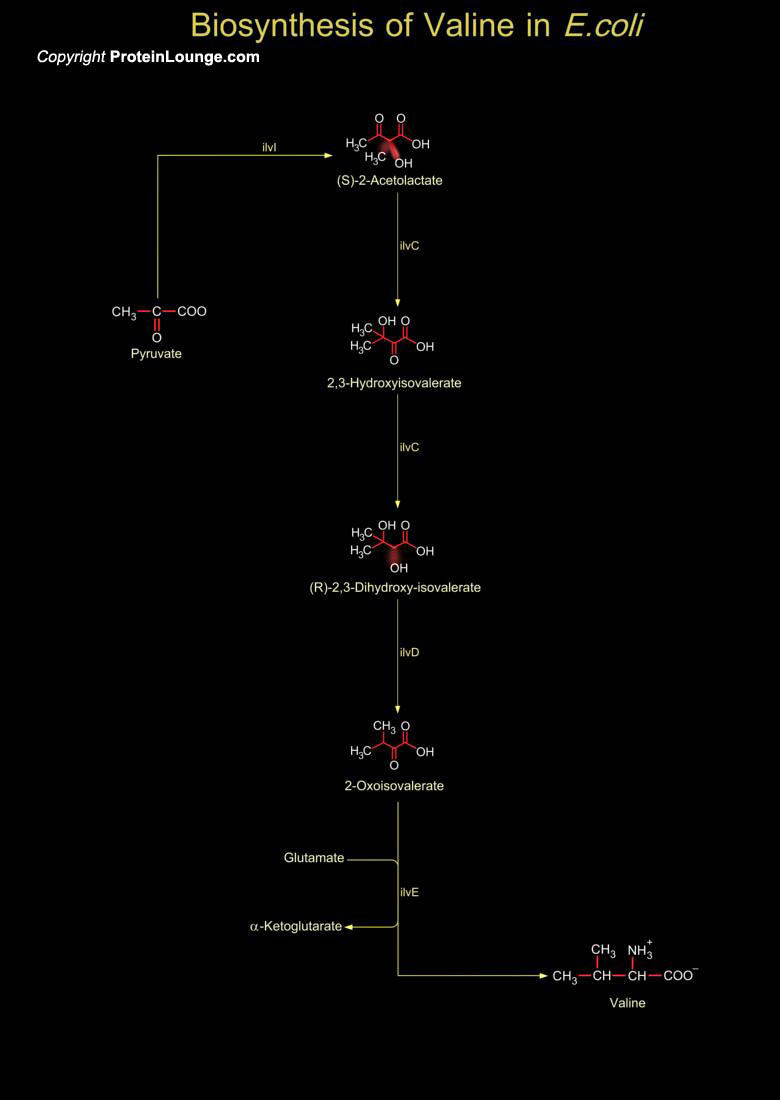
Valine is a hydrophobic amino acid, it often forms the helical structures within interior proteins. Valine is an essential amino acids and must be obtained in the diet in human but not synthesized in human. It is generally biosynthesized by plants, algae, fungi, bacteria and archaea. Important sources of valine include soy flour, cottage cheese, fish, meats, and vegetables. Valine is incorporated into proteins and enzymes at the molar rate of 6.9 percent when compared to the other amino acids. In Escherichia coli (E.coli), Valine is biosynthesized from two Pyruvate molecules where two molecules of Pyruvate are converted to Alpha-Acetolactate by the enzyme ilvI (acetolactate synthase/acetohydroxybutanoate synthase, catalytic subunit) yielding a molecule of CO2.[..]
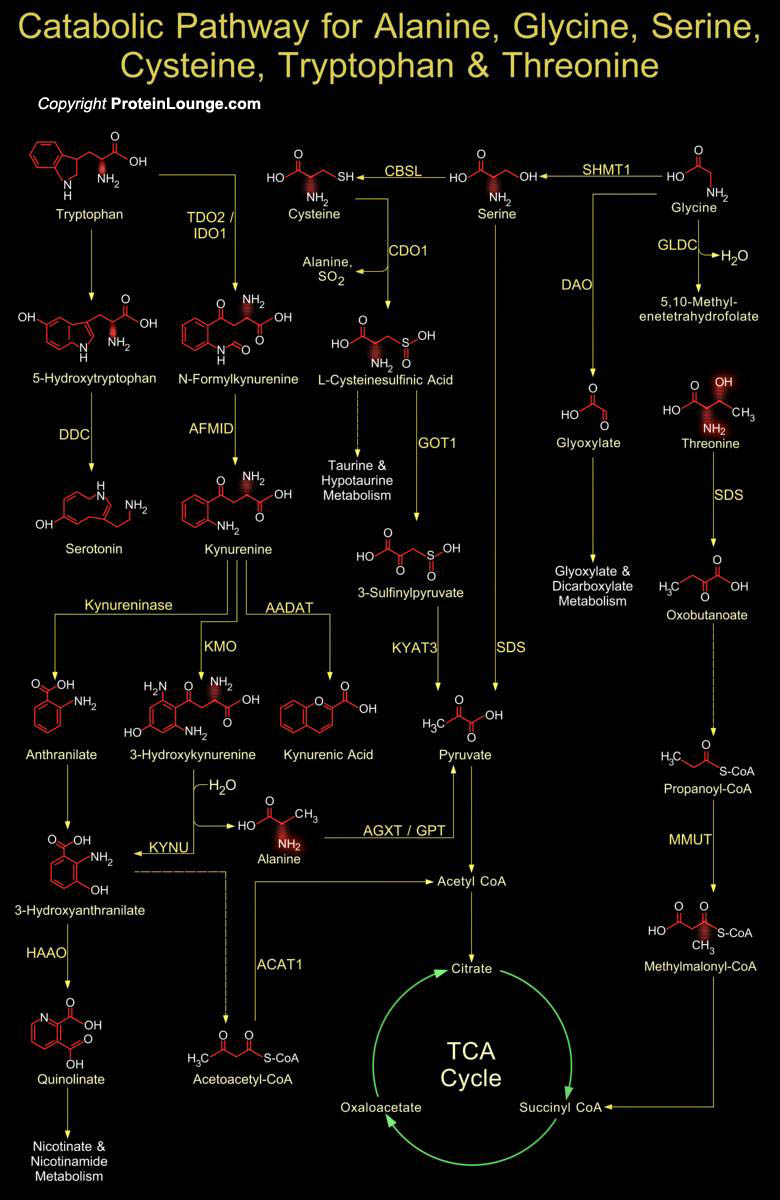
Five amino acids, Alanine, Cysteine, Glycine, Serine and Threonine are broken down to yield Pyruvate. Tryptophan is included in this group since one of its breakdown products is Alanine, which is transaminated to Pyruvate. Alanine is an important in inter tissue nitrogen transporter and is an important part of the Glucose-Alanine cycle. The alanine catabolic pathway involves a simple aminotransferase reaction that directly produces pyruvate. The transamination is carried out by GPT (Glutamic--Pyruvic Transaminase). Post pyruvate production, based on metabolic requirements of the cell, pyruvate can either be oxidized by the PDH complex to acetyl-CoA and diverted into the TCA cycle or it can be diverted into the gluconeogenic pathway to release glucose[..]
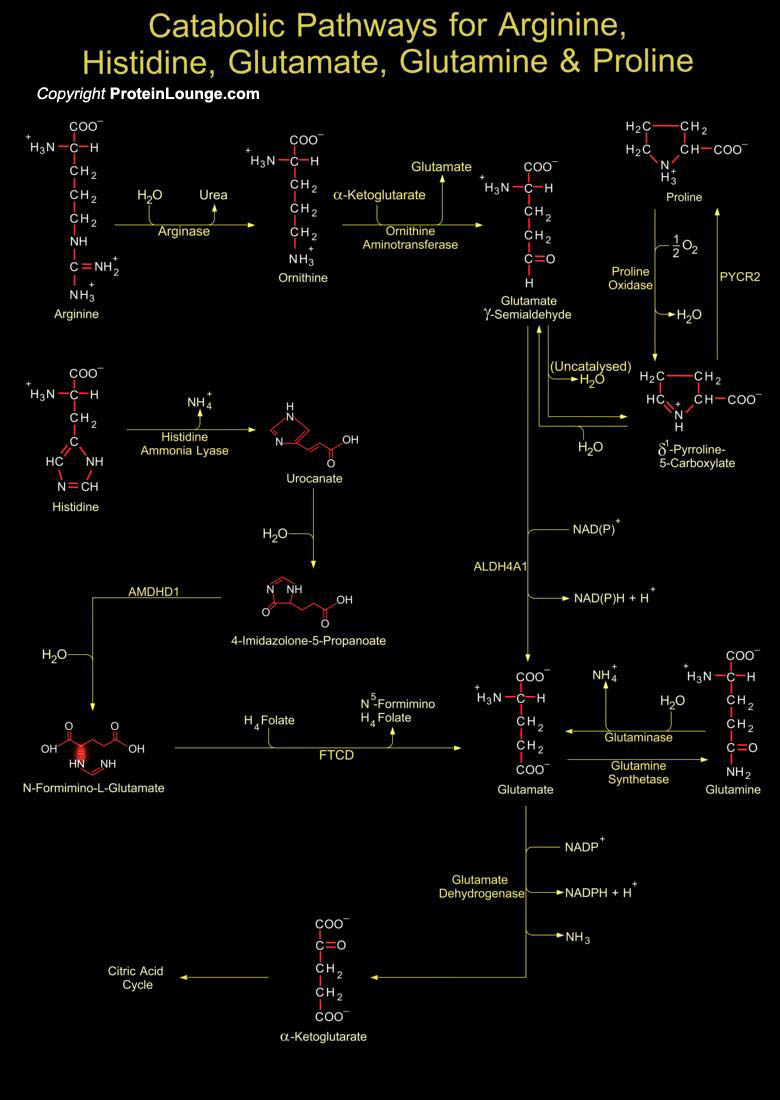
Arginine serves as a precursor for synthesis of protein, nitric oxide, creatine, polyamines, agmatine, and urea. It is synthesized from glutamine, glutamate, and proline and is metabolically interconvertible with the amino acids proline and glutamate. ARG1 (arginase 1) converts L-arginine into L-ornithine and urea. L-ornithine is acted upon by OAT (ornithine aminotransferase) to further synthesize L-glutamate-5-semialdehyde which spontaneously undergoes non-enzymatic reaction to produce P5C (δ 1-pyrroline-5-carboxylate). P5C can further initiate proline biosynthesis by the enzyme PYCR2 (pyrroline-5-carboxylate reductase 2) (Ref.1, 2&3). Glutamate an important neurotransmitter serves as a precursor for the biosynthesis of amino[..]
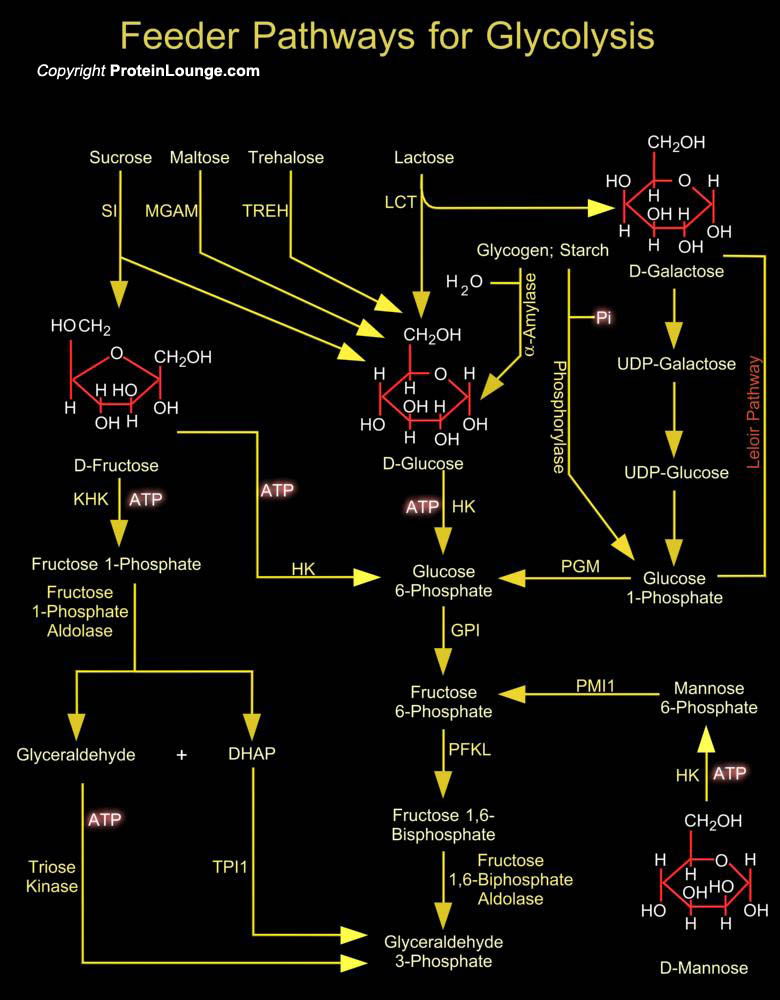
Many carbohydrates besides Glucose (or D-Glucose) meet their catabolic fate in Glycolysis, after being transformed into one of the Glycolytic intermediates. The most significant are the storage polysaccharides Glycogen and Starch; the disaccharides Maltose, Lactose, Trehalose and Sucrose; and the monosaccharides Fructose (or D-Fructose), Mannose (or D-Mannose) and Galactose (or D-Galactose) (Ref.1). Glycogen in animal tissues and in microorganisms; and Starch in plants, are mobilized for use within the same cell by a phosphorolytic reaction catalyzed by Phosphorylase (that is Glycogen Phosphorylase in animals and in microorganisms or Starch Phosphorylase in plants). These enzymes catalyze an attack by Pi (Inorganic Phosphate) on the (Alpha1-4) glycosidic linkage[..]

